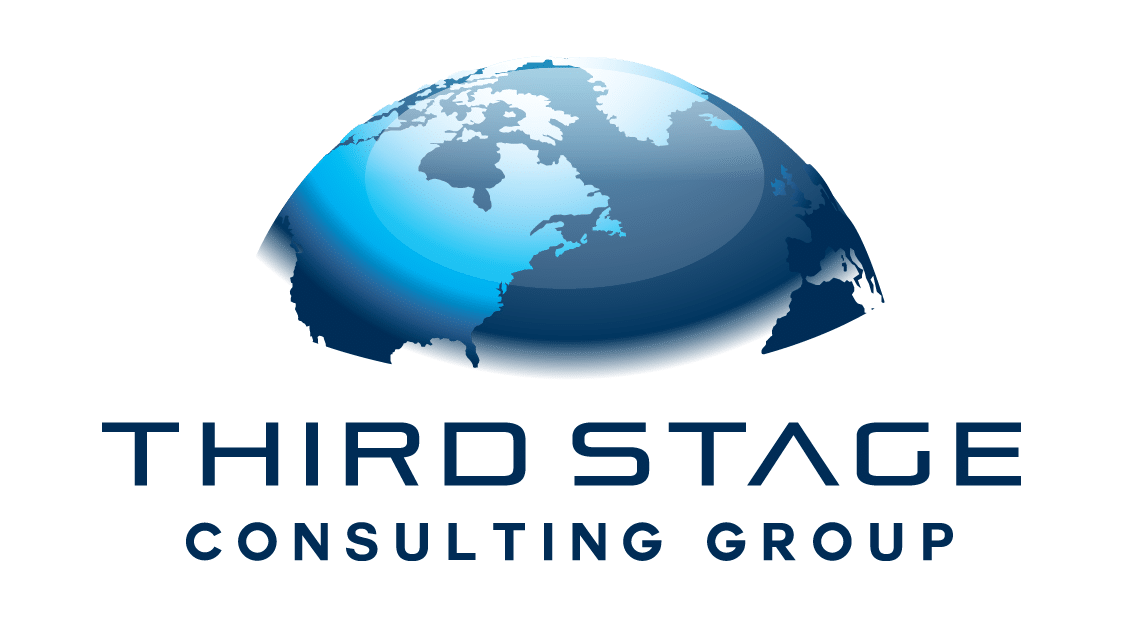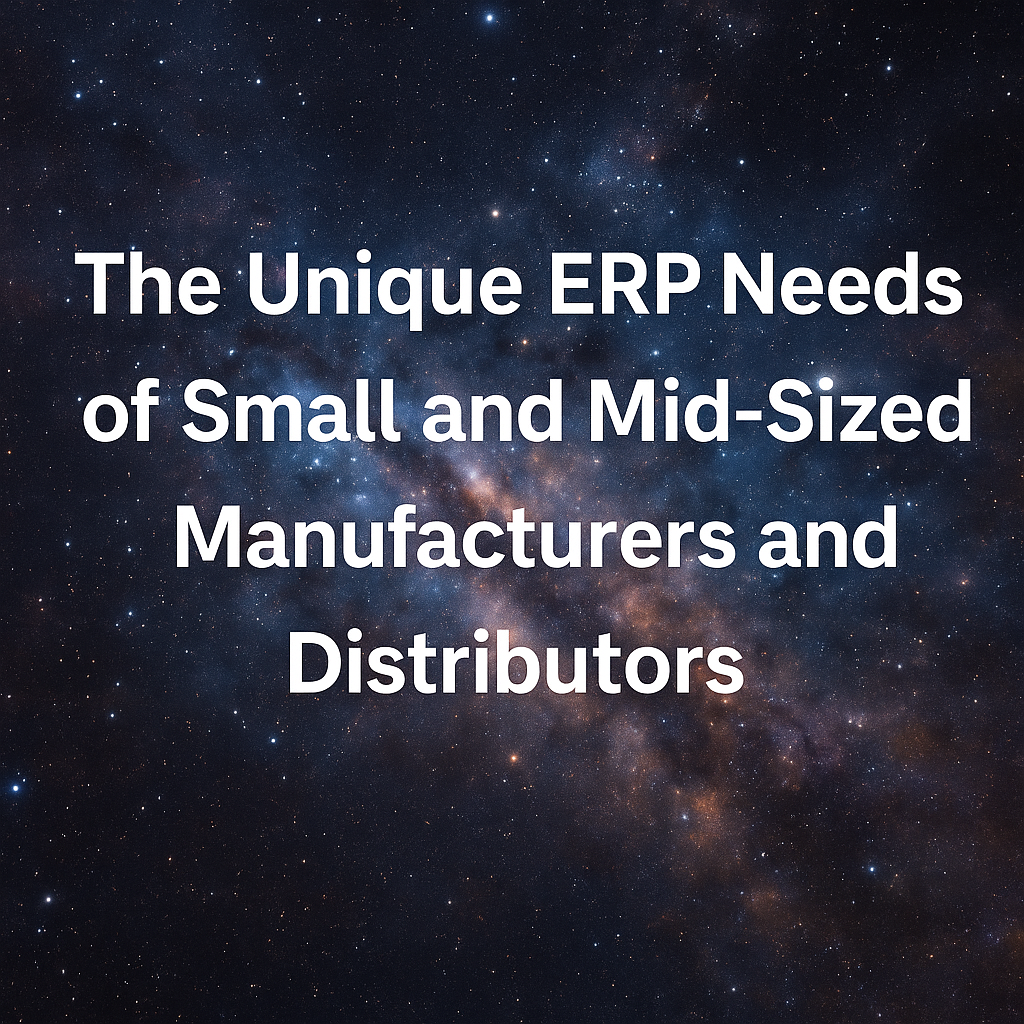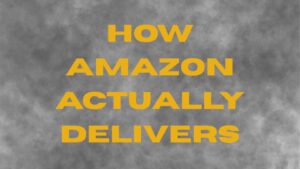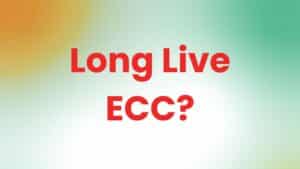By Eric Kimberling, CEO of Third Stage Consulting
When most people think about ERP and digital transformation, they picture large enterprises with big budgets and full-time project teams. But the reality is, small and mid-sized manufacturing and distribution companies face just as much complexity — if not more — when it comes to upgrading their core systems.
In fact, these companies often face a more nuanced challenge: they need to modernize, streamline, and prepare for growth, without the luxury of unlimited resources or massive IT departments.
So what exactly makes ERP transformations different for SMBs in manufacturing and distribution? What should you be thinking about before choosing new software?
Let’s dive in.
Table of Contents
ToggleWhy SMB Manufacturers and Distributors Replace Their Core Systems
When smaller organizations come to us, they’re typically trying to solve one of two major problems:
1. They Need to Streamline Operations
Most of the small and mid-market companies we work with rely heavily on spreadsheets, QuickBooks, or outdated financial systems. These tools may have gotten them this far, but they often lead to inefficiencies, errors, and siloed data.
Whether the company is poised for high growth or just trying to gain better control over their processes, modernizing the tech stack is a necessary step to remove manual work, reduce duplication, and improve accuracy.
2. They’re Preparing for New Technology Integration
In many cases, a company wants to implement tools like a new CRM, order management system, or HR platform — but those tools don’t integrate well with their existing systems.
Rather than stacking modern solutions on top of old foundations, they realize it’s time for a more unified, scalable infrastructure. That often starts with replacing the core ERP or financial system and building outward from there.
How ERP Projects Look Different for SMBs
1. Limited Internal Resources
In a large enterprise, you might have a full-time internal project team. But in a smaller company, the same 10–15 people managing day-to-day operations are also the ones expected to lead the ERP project.
That creates a major bandwidth issue. Companies must carefully balance project work with keeping the business running, which makes phased rollouts and tight prioritization especially critical.
2. More Complexity in the Starting Point
Larger organizations often migrate from one ERP to another. But smaller manufacturers and distributors are usually moving away from a patchwork of Excel, QuickBooks, Access databases, and disconnected point solutions.
This means there’s more data to clean up, more manual processes to re-engineer, and a steeper change curve for end-users. The transformation is deeper — and the foundation often has to be built from scratch.
Choosing the Right Type of Technology (Hint: It’s Not Always Full ERP)
One of the big misconceptions is that ERP always has to mean a full-blown, end-to-end suite.
In reality, the right solution might be:
- A solid financial system + standalone CRM
- A lightweight ERP that grows over time
- A best-of-breed approach with integrated platforms
We’ve worked with clients who chose to focus on CRM first, knowing they needed stronger sales processes more urgently than warehouse automation. Others kept their HR function outsourced, opting for a simple HRIS integration instead of a full module.
The key is to build around your business priorities — not a vendor’s sales pitch.
Common Vendors for SMB Manufacturers & Distributors
There’s no one-size-fits-all ERP for this space, but a few vendors show up frequently in our client work:
- Epicor: Built with manufacturing in mind, especially strong for make-to-order and complex production.
- Infor: Offers specialized industry solutions with solid distribution capabilities.
- Microsoft Dynamics 365: Flexible, familiar, and extensible — a strong mid-market option.
- Oracle NetSuite: Cloud-first, scalable, and relatively fast to implement.
But don’t ignore tier-two vendors either. Solutions like Acumatica, Syspro, or Priority Software offer powerful functionality at a lower cost of ownership — and are often a better fit for companies looking to start small and scale up.
Our advice? Be open-minded. Big names can be great, but so can the underdogs. The most important thing is choosing a system that aligns with your business model and growth trajectory.
You Don’t Have to Get It Perfect — You Just Have to Get It Right
A lot of SMB leaders fear making the wrong call — investing in technology that won’t serve them long-term. But the good news is, today’s ERP ecosystem offers flexibility like never before.
Smaller systems no longer mean short-term fixes. With modular platforms, API capabilities, and smart implementation strategies, you can:
- Start small
- Get wins early
- Layer on additional functionality over time
The goal is not to get the most powerful ERP in the market. It’s to get the right-sized solution that enables growth and improves efficiency without disrupting your business.
First Steps to Get Started
If you’re just beginning the journey, here’s what I recommend:
1. Define Where You Want to Be (1–3 Year View)
Start by aligning your team around key questions:
- What does growth look like in the next 12–36 months?
- Where are our biggest bottlenecks right now?
- Which processes absolutely need to change?
You don’t need a perfect five-year vision — but you do need to know where you’re heading.
2. Audit Your Existing Tech Stack
Map out what you have, where it breaks down, and how those systems are currently used. You might find that some systems can be retained or enhanced, while others need to be replaced.
This audit often reveals hidden inefficiencies — and prevents you from replacing tech that’s actually working just fine.
3. Focus on Business Strategy First
Ask yourself: “What do we want our business to look like — and how can technology support that vision?” That mindset leads to better vendor decisions, smarter implementation plans, and more sustainable outcomes.
Final Thoughts: You Don’t Need to Go It Alone
Small and mid-sized manufacturers and distributors have unique challenges — but also unique opportunities.
You don’t need a massive budget or full-time IT team to succeed with ERP. You just need the right plan, the right partner, and the right mindset.
At Third Stage Consulting, we help companies of all sizes align their strategy, select the best-fit technology, and implement it in a way that’s practical, scalable, and grounded in your real-world needs.
📘 Free Resource: Download the 2025 Digital Transformation Report
Get our vendor rankings, software selection checklists, and industry benchmarks — all designed to help you navigate your ERP journey with confidence.






